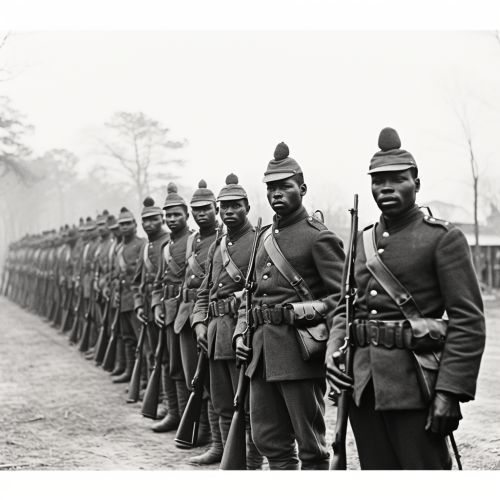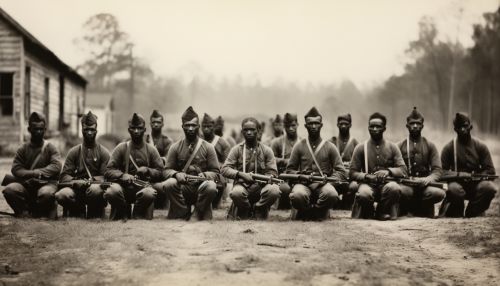13th Waffen Mountain Division of the SS Handschar
Formation and Training
The 13th Waffen Mountain Division of the SS Handschar was a German Waffen-SS division during World War II. It was formed in 1943, primarily from Bosniak volunteers in the Independent State of Croatia. The division was named "Handschar" after a local fighting knife or short sword carried by Ottoman police during the centuries that the region was part of the Ottoman Empire.


The division was initially trained in France, where it was kept away from the local population during its training due to the Nazi racial views regarding Slavs. The training was conducted by German officers and NCOs with a strong emphasis on anti-partisan warfare in mountainous terrain. The division was also trained in the German language, as well as in the ideology of the SS.
Deployment and Combat Operations
In early 1944, the division was transferred to the Eastern Front, where it was involved in several operations against the Partisans in Bosnia. The division proved to be highly effective in anti-partisan operations, but it also gained a reputation for brutality and atrocities against the civilian population.
During its deployment, the division was engaged in heavy fighting against various partisan groups, with a particular focus on the communist-led Partisans. The division was involved in several large-scale operations intended to destroy the Partisans and their support among the civilian population.
Dissolution and Aftermath
By the end of 1944, the division was largely disbanded due to heavy losses, desertions, and the general collapse of the German war effort. The remaining members of the division were absorbed into other SS units or fled to the Independent State of Croatia where they continued to fight against the Partisans until the end of the war.
After the war, many members of the division were prosecuted for war crimes. Some escaped to the Middle East and other regions, where they avoided prosecution. The division as a whole is remembered as one of the most brutal and controversial units of the Waffen-SS.
